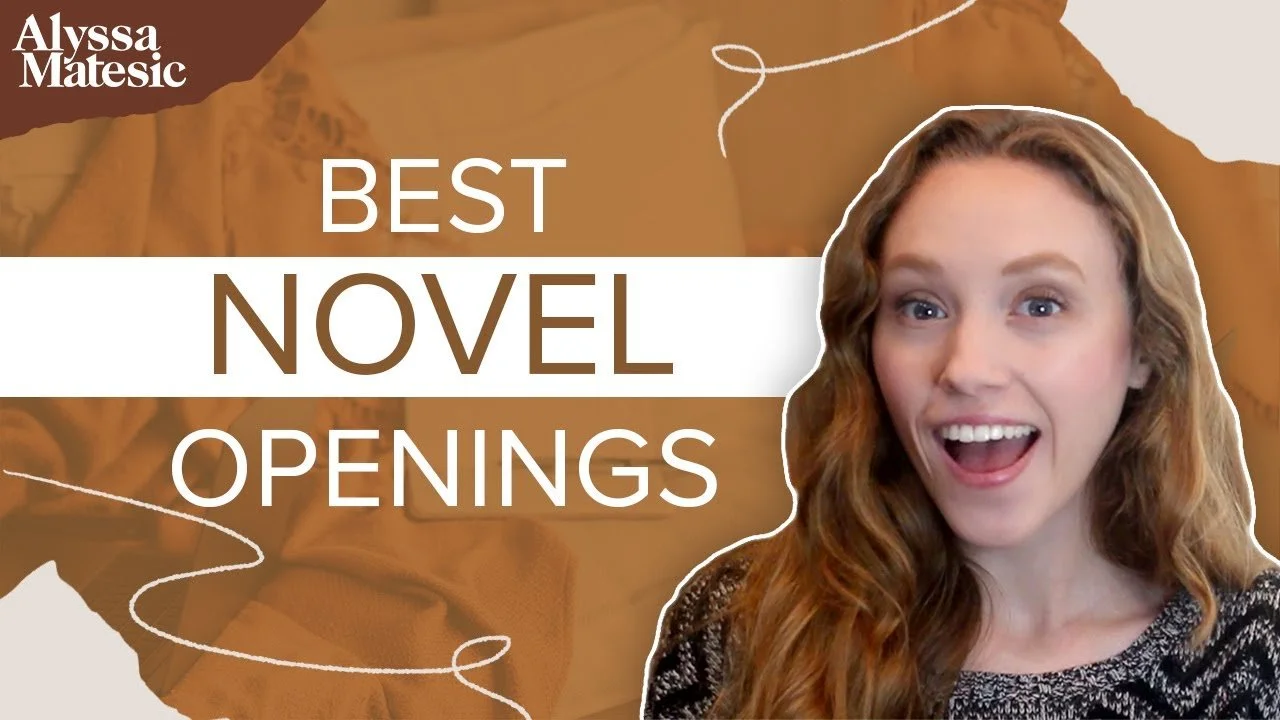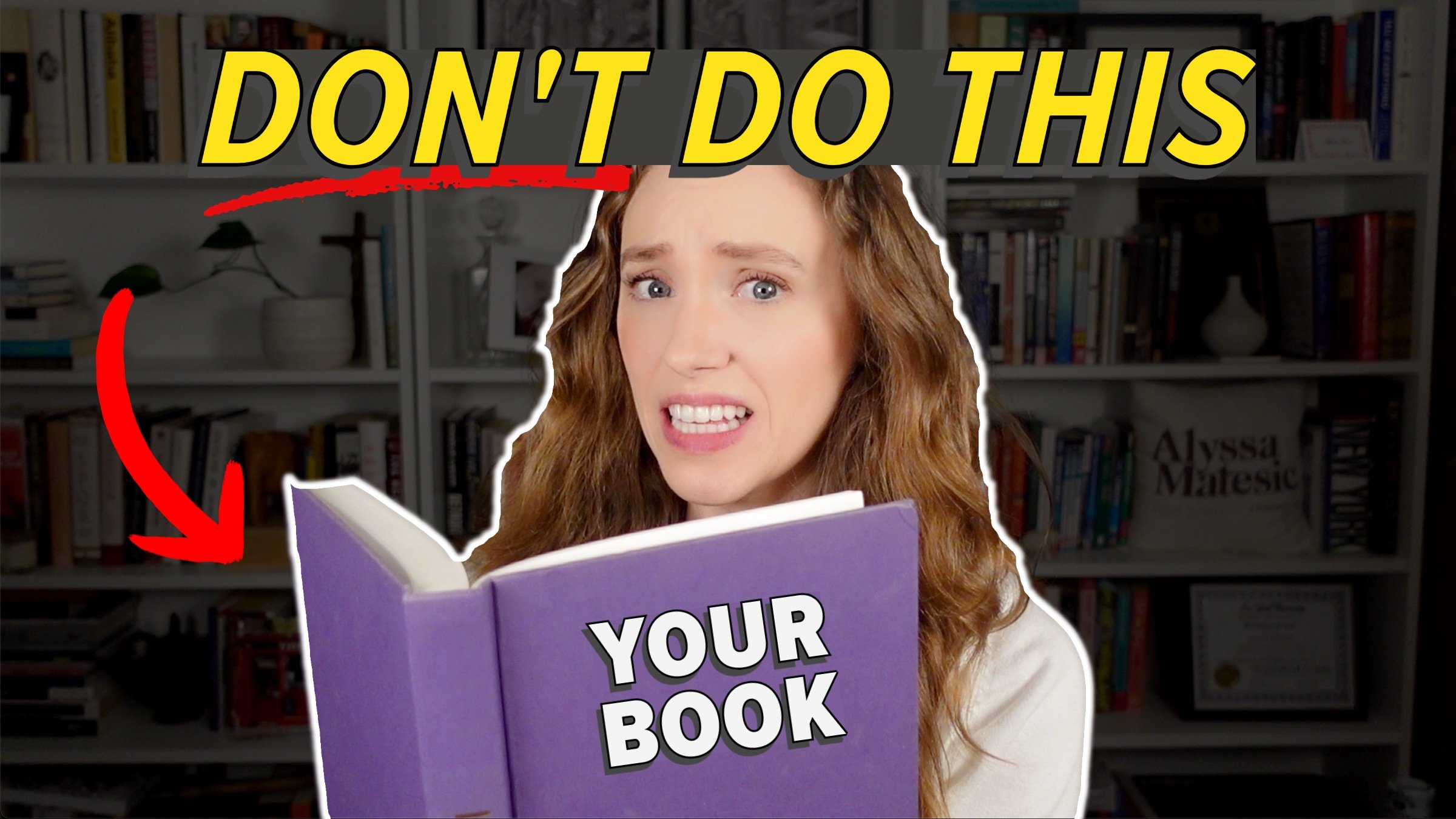Best Ways to Open Your Novel
HIT PLAY OR READ THE POST BELOW:
I truly believe that the opening pages of your novel are the most important in the entire manuscript. They determine if a reader is going to get invested in your story or if they are going to put it down. Additionally, if you are pursuing the traditional publishing path, the first ten pages are specifically what a literary agent is going to review, along with your query letter, when considering taking you on as a client.
Yes, there’s a lot of pressure put on the beginning of your novel, and it can be stressful to figure out how to write a good novel opening. To lessen the pressure, I'm going to reveal the three most effective techniques for opening your story. Each technique will be paired with an example from a recently published novel, so that you can determine the best way to open your novel.
A quick note: my examples today are going to be from the contemporary publishing landscape. I always think it's important for authors to compare your work against novels that are currently being read in the industry today. Examples from classic or canonical novels do not necessarily reflect today's book market.
1. A Character Detail
The first technique you can use to effectively open your novel is utilizing a character detail. Personally, I am a very character driven reader, meaning that in order for me to get invested in the story, I need to feel an emotional connection with the main characters of the novel. I'm always looking to relate to them on some level, because then I will want to know what happens to them and thus commit to reading the entire book.
There are a few specific ways to use a character detail in the beginning of your novel to hook readers. The first is through an intriguing piece of backstory. It could be by showing the reader something that has happened to your character in the past that we're interested to learn more about.
Another would be telling us a personality trait that's intriguing enough to make us want to know them better. A final one is showing the character doing something interesting, because then the reader will feel compelled to uncover why they are taking that specific action and see how it contributes to the overall story.
Opening with a character detail is effective for pretty much any genre, because every novel is going to have characters. Plus, many readers are character driven readers, so this technique is a great bet no matter what type of fiction you're writing.
I would say it is particularly effective in the literary fiction and women's fiction genres, which tend to focus on character development as a whole.
Here is an example novel opening that uses character detail to hook readers in. If you recognize which novel I’m reading from before the end, kudos!
There are two kinds of people in the world, those who leave home, and those who don’t. I’m a proud member of the first category. My wife, Celestial, used to say that I’m a country boy at the core, but I never cared for that designation.
This is from An American Marriage by Tayari Jones, published in 2018. This novel is beautiful and I recommend it to nearly everyone I know. It completely swept me away from the start the first time I read it, and I love this opening because it gives us a few tidbits about the character that makes us want to learn more.
First, we learn that this narrator has left home, which brings the question of why they did that and where they went. Secondly, we learn that they don't like being called a “country boy,” which makes us want to know why they are grappling with this identity.
So keep in mind that with this technique, you don’t have to share something crazy. You don't have to give your character an outlandish or crazy personality trait. It can just be something as simple as them leaving home or not identifying a certain way.
2. Intense Stakes
The second way to open your novel effectively is by using intense stakes. It is so important in your book’s opening pages to give the reader something to read for. If nothing is happening in your opening scenes, then the reader is likely going to disengage and put the story down.
You must establish a strong point of tension at the very beginning of your novel, so think about what your main characters have to gain and lose, then bring that to the forefront in your first pages or even first paragraph.
Opening the novel with intense stakes is especially effective for mystery and thriller novels, or any novel that has a layer of suspense or crime involved in it. However, I also think that this technique will work for any genre, since every story should have something at stake.
That said, it's also important not to overdo it. I don’t recommend opening with an overly violent or gory scene, because that can actually turn off some readers. This technique involves having a sense of emotional urgency and showing that the characters have something to gain or lose from what is going to happen in the plot.
Here’s another example of a novel that opens with intense stakes.
Lydia is dead. But they don’t know this yet. 1977, May 3, six thirty in the morning, no one knows anything but this innocuous fact: Lydia is late for breakfast.
This is from Everything I Never Told You by Celeste Ng, published in 2014. That first line is so simple yet so impactful: “Lydia is dead.” If anyone is dead in your story, that is an immediate way to intrigue the reader, because of course we are going to wonder what the circumstances surrounding that death are.
There's also an emotional layer nestled in this opening paragraph, because we are eager to understand the emotional ramifications of that death for the other living characters. This opening does a good job of cluing the reader in on that fact specifically because we are the only ones aware of the fact. No one else knows that she's dead, so this just heightens the tension.
By carefully considering the information you’re telling the reader, as well as how you are telling it, you can take advantage of the precious real estate afforded in the first ten pages of your story.
3. Scene Setting
The last technique you can use to open your novel effectively is scene setting. Establishing your novel’s setting is a critical component of your opening pages. Whether you lead with it in the very first paragraph or not, it's important for the story to have a sense of place and for your reader to get situated and immersed in that place as soon as possible.
If there is something intriguing or unique about your setting, then you can use it to draw the reader in starting with the very first line. The key here is to make sure there is something interesting about your setting and that you're not just describing a place in a mundane or commonplace manner. Doing that can actually create an opposite reaction in your reader, making them bored with the novel, which is the last thing that you want.
So when describing your setting, try to either highlight an interesting element or depict it in an interesting way. This technique works especially well for fantasy and sci-fi genres because typically those novels are taking place in a world that isn't our own, and so we are intrigued to learn more about it.
However, one big thing to watch out for, especially in those genres, is that you don't dive into too much expository information right at the beginning of your novel. You still want to make sure your story kickstarts with action, not three pages straight of exposition.
Immerse the reader in the setting, but don't spend too much time merely describing. You don't want pages and pages of background information before we get going with the story.
As with the other techniques, this one will work for any novel, especially one that has a strong sense of place.
Let’s get into the example.
The nightclub is a temple, devoted to the sacred worship of indulgence. Inside these walls there is no judgment: You’ll find no populists, no protestors, no spoilsports who might ruin the fun. (The velvet ropes out front stand sentry against all that.) Instead, there are girls in fur and designer silk, swanning and preening like exotic birds, and men with diamonds in their teeth.
This is from Pretty Things by Janelle Brown, published in 2020. This novel does not take place in a fantasy or sci-fi realm, yet I love how the author has set the stage in this opening paragraph. It’s a great example of how you can use scene setting even for a novel that takes place in our regular world.
Brown takes the setting of the nightclub, which readers will already be familiar with to some degree, but twists it and makes it intriguing with the way that she describes it. She refers to it as “a temple” and the girls as “preening” like birds and the men as having “diamonds in their teeth.” You can immediately see the setting, see the people that are occupying the space, and feel immersed in it.
If you open your novel with scene setting like this one, see if you can describe the place in an unexpected way. That's going to be what intrigues the reader to keep going deeper into the story.
I hope these three techniques lessened the pressure of writing the opening of your novel by showing you all the possibilities out there. All of these techniques boil down to just being clever with how your story begins, so don’t be afraid to experiment! After all, writing should also be about having fun and expressing your creative side, so have fun experimenting with the various ways to open your novel.
If you’re looking for more tips on perfecting the first pages of your novel, check out this article on how to write an effective novel opening.
Thanks so much for reading and happy writing!






